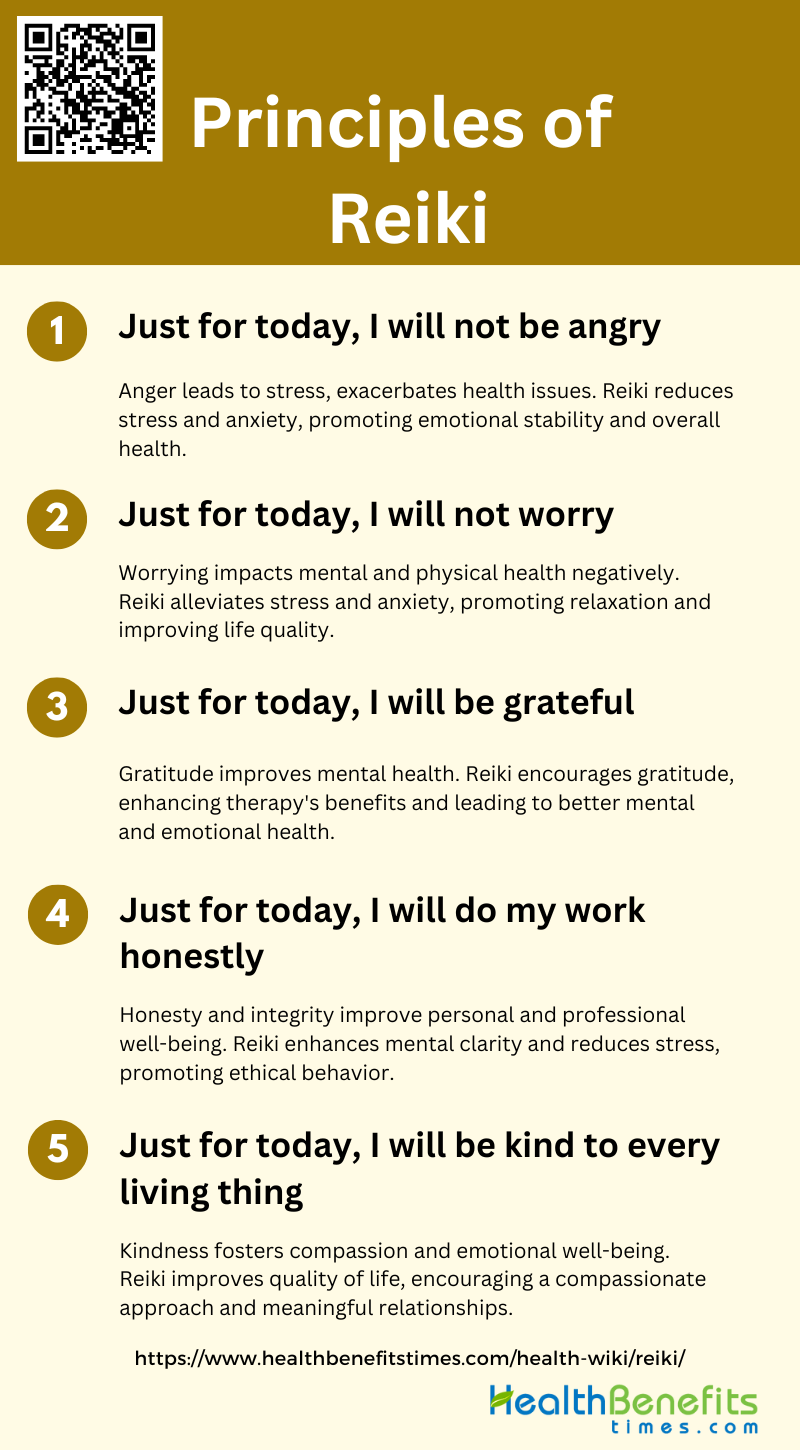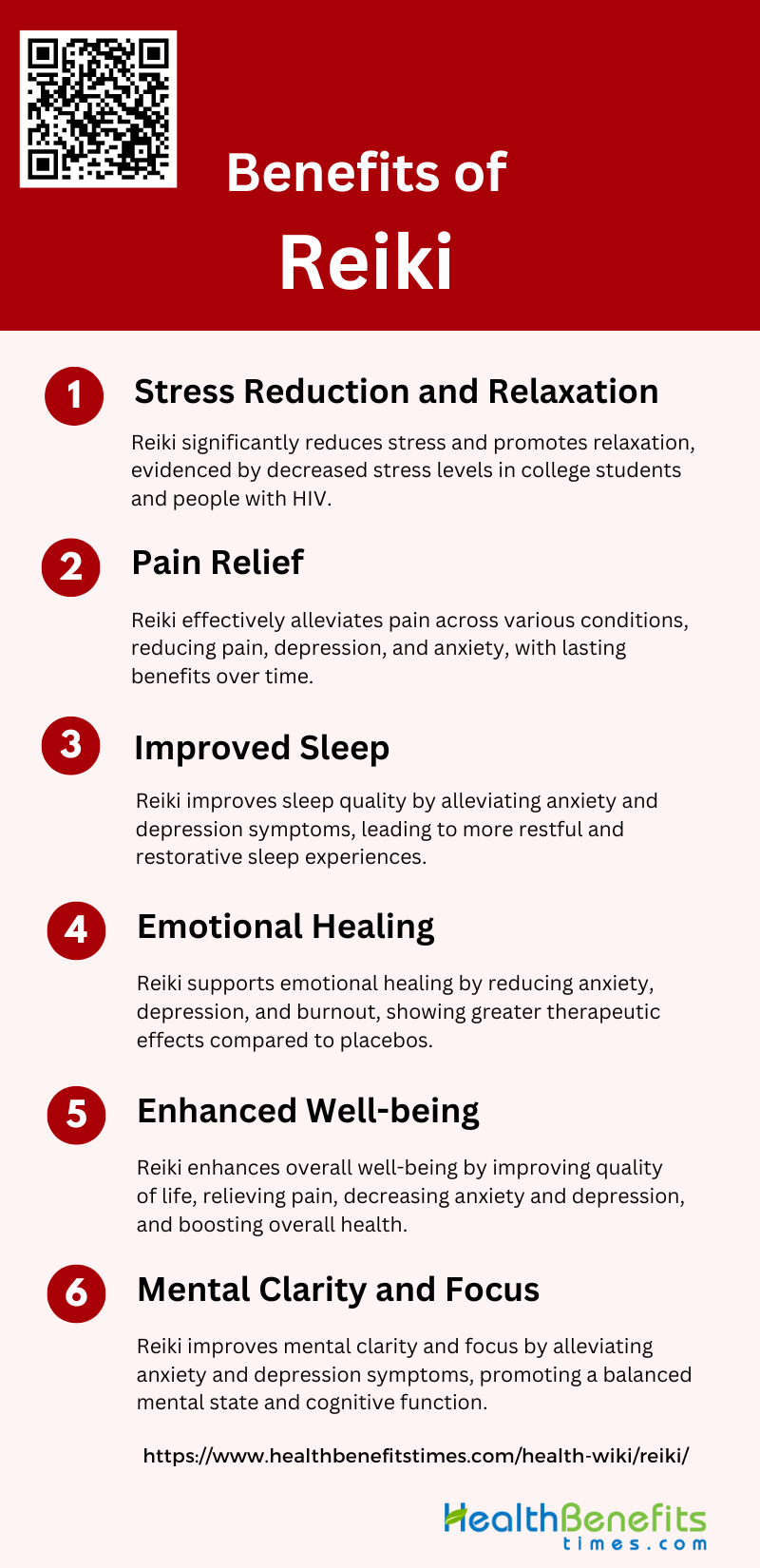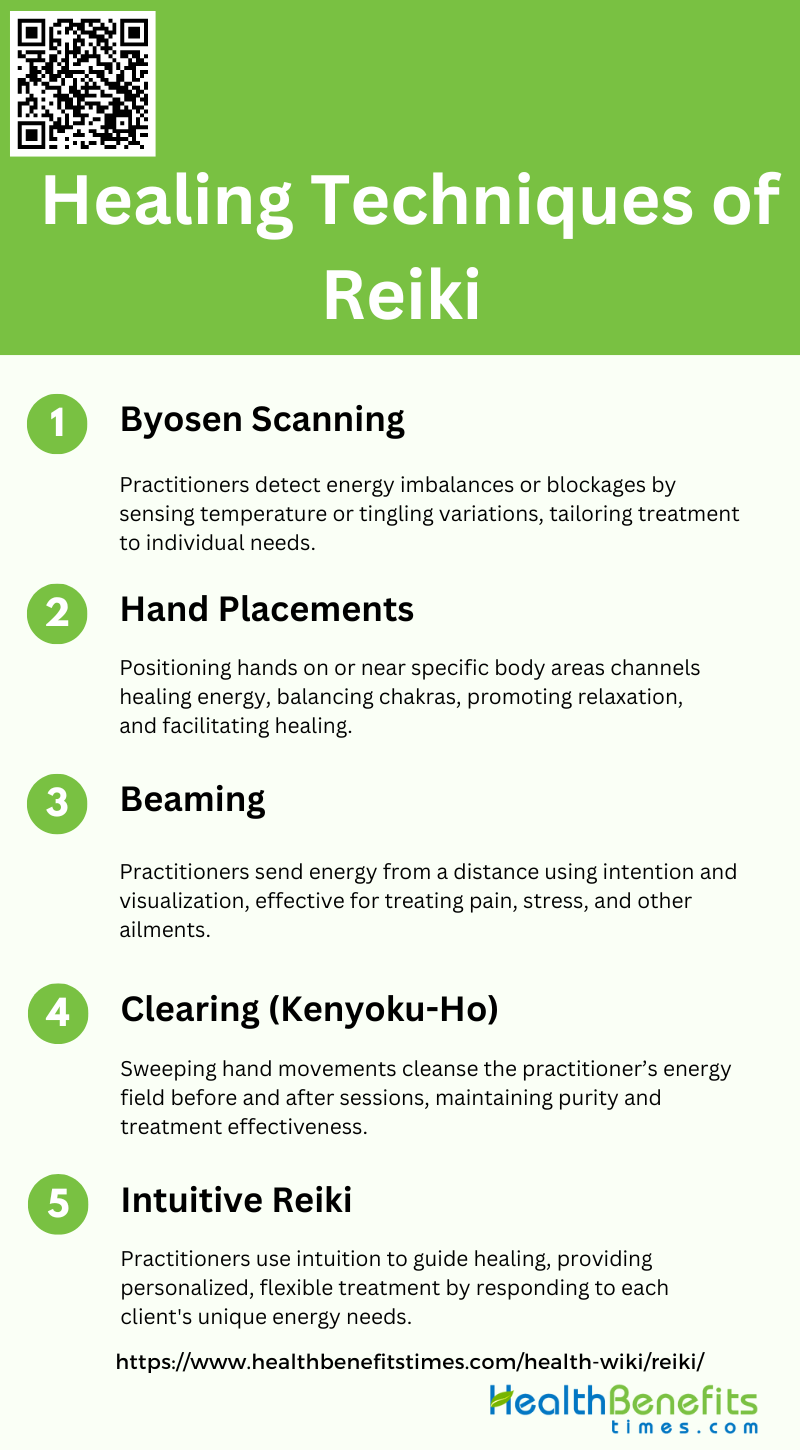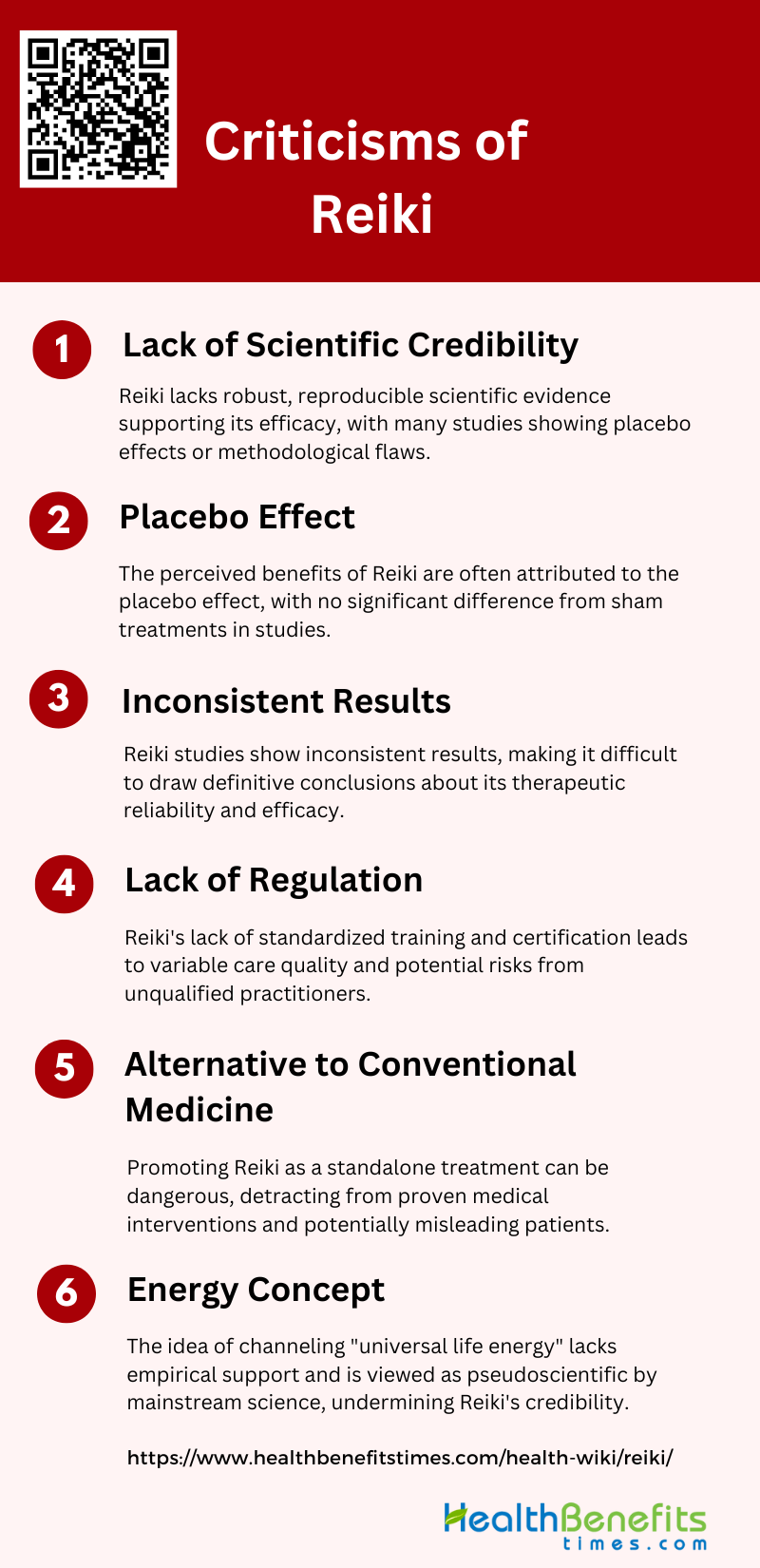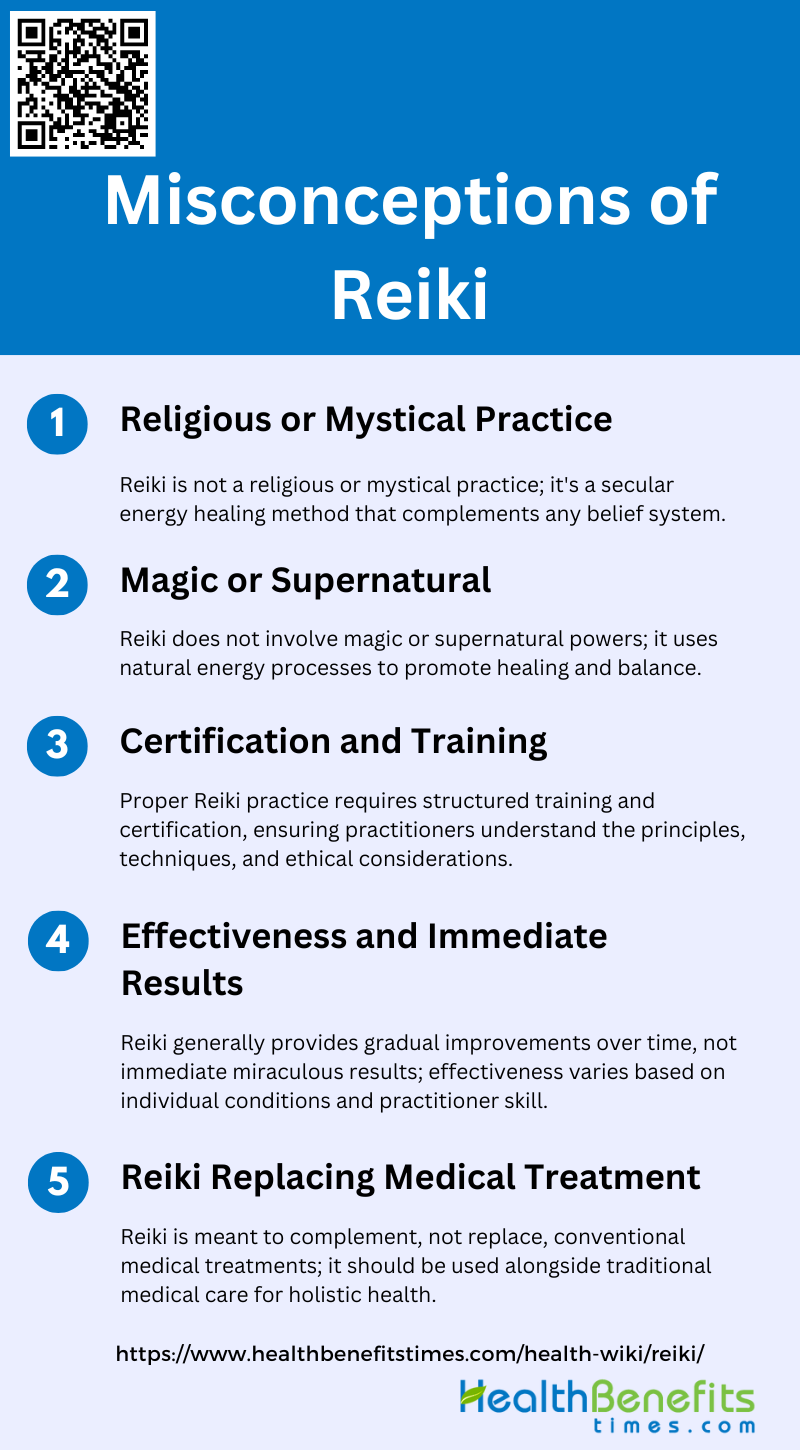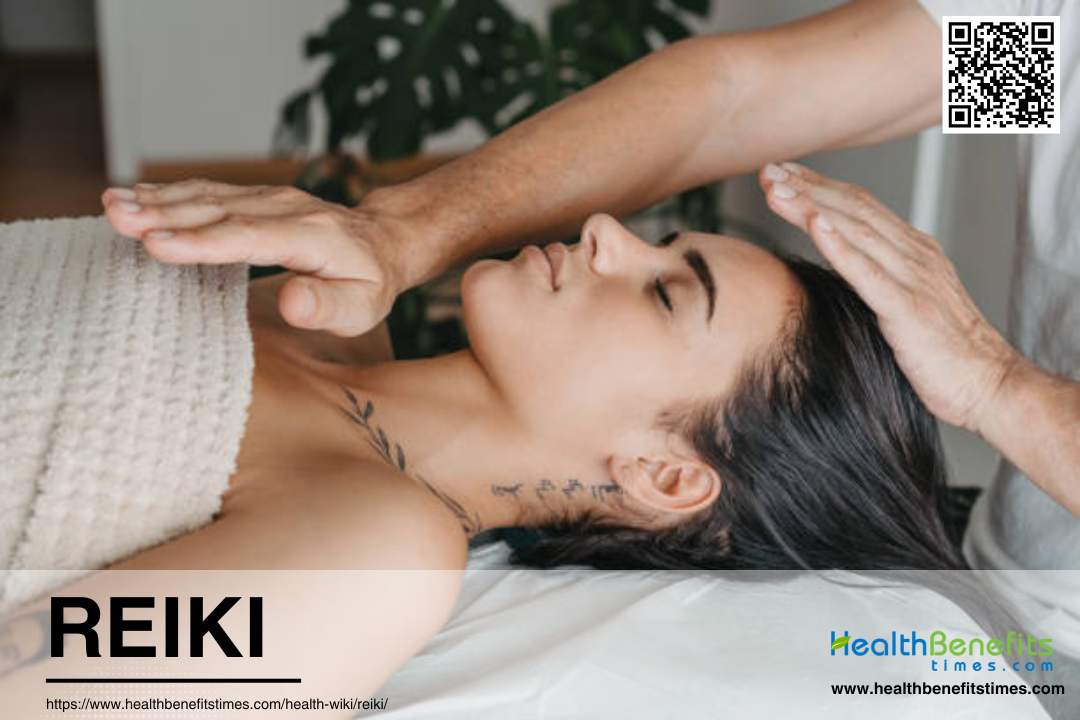 Reiki is a form of alternative medicine that originated in Japan in the early 20th century. It involves the transfer of universal energy from the practitioner’s palms to the patient, aiming to promote healing and balance within the body. Practitioners believe that this energy can help alleviate stress, reduce pain, and enhance overall well-being by clearing energy blockages and restoring the natural flow of life force. Reiki sessions typically involve the patient lying down while the practitioner places their hands lightly on or just above specific areas of the body. This practice is often used as a complementary therapy alongside conventional medical treatments.
Reiki is a form of alternative medicine that originated in Japan in the early 20th century. It involves the transfer of universal energy from the practitioner’s palms to the patient, aiming to promote healing and balance within the body. Practitioners believe that this energy can help alleviate stress, reduce pain, and enhance overall well-being by clearing energy blockages and restoring the natural flow of life force. Reiki sessions typically involve the patient lying down while the practitioner places their hands lightly on or just above specific areas of the body. This practice is often used as a complementary therapy alongside conventional medical treatments.
History of Reiki
Reiki, a healing practice founded by Mikao Usui in March 1922, has a rich and complex history that intertwines with various spiritual traditions. Usui’s discovery of Reiki occurred during a meditative experience on Kurama yama, a sacred mountain in Japan, where he received the Reiki energy spontaneously. He subsequently established the Usui Reiki Ryoho Gakkai in April 1922 to formalize the practice. Despite its Japanese origins, Reiki’s history was initially shrouded in mystery, especially after World War II when the original Reiki organization went underground, making accurate information scarce even for Japanese researchers. The practice was later brought to the West by Hawayo Takata in 1937, leading to the development of over 100 styles of Reiki, including the more recent Temari Reiki. Reiki’s roots are also linked to ancient healing methods from Chinese Medicine and Christian healing, contributing to its growing popularity as a complementary therapy in the Western world. Despite its widespread use, Reiki remains understudied and unproven by Western science, necessitating further rigorous research to validate its clinical effectiveness.
How does Reiki Works?
Developed in Japan by Mikao Usui in the late 19th century, Reiki is believed to balance the biofield, thereby enhancing the body’s ability to heal itself and manage stress. Research indicates that Reiki can be effective in reducing symptoms of mental health issues such as stress, anxiety, and depression, particularly when these symptoms are clinically relevant. Additionally, Reiki has been shown to alleviate work-related stress among nurses and reduce burnout among community mental health clinicians. While the exact physiological mechanisms remain unclear, studies suggest that Reiki may improve quality of life by reducing pain and anxiety, and enhancing relaxation. Despite its growing popularity and anecdotal support, more rigorous scientific research is needed to fully establish its clinical effectiveness and understand the underlying mechanisms.
Principles of Reiki
The principles of Reiki are foundational guidelines that practitioners follow to promote healing and well-being. These principles are:
1. Just for today, I will not be angry
Anger can lead to significant psychological and physiological stress, which can exacerbate pain and other health issues. Studies have shown that Reiki can effectively reduce stress and anxiety, which are often precursors to anger. For instance, a meta-analysis revealed that Reiki significantly decreases pain and anxiety levels, suggesting a broader impact on emotional well-being. By practicing this principle, individuals may experience a reduction in stress-related symptoms, contributing to overall health and emotional stability.
2. Just for today, I will not worry
Worrying is a common source of stress and anxiety, which can negatively impact both mental and physical health. Reiki has been shown to alleviate stress and anxiety, making it a useful tool for those who struggle with chronic worry. A study on caregivers of cancer patients found that Reiki significantly reduced their stress levels and improved their overall sense of well-being. Additionally, another review highlighted that Reiki activates the parasympathetic nervous system, promoting relaxation and reducing anxiety. By adhering to this principle, individuals can leverage the calming effects of Reiki to mitigate worry and enhance their quality of life.
3. Just for today, I will be grateful
Gratitude is a powerful emotion that can improve mental health and overall well-being. Reiki practices often encourage a mindset of gratitude, which can amplify the therapy’s positive effects. Research indicates that Reiki not only reduces pain and anxiety but also improves emotional states, making it easier for individuals to focus on positive aspects of their lives. By fostering a sense of gratitude, individuals can enhance the therapeutic benefits of Reiki, leading to improved mental and emotional health. This principle encourages a positive outlook, which can be particularly beneficial in managing chronic conditions and enhancing life satisfaction.
4. Just for today, I will do my work honestly
Honesty and integrity are foundational to personal and professional well-being. Reiki promotes ethical behavior and mindfulness, which can improve one’s approach to work and life. Studies have shown that Reiki can enhance mental clarity and reduce stress, which are essential for maintaining honesty and integrity in one’s work. By committing to this principle, individuals can create a more harmonious and productive work environment. The reduction in stress and improvement in mental clarity provided by Reiki can help individuals perform their tasks more effectively and ethically, contributing to overall job satisfaction and personal fulfillment.
5. Just for today, I will be kind to every living thing
Kindness and compassion are central to the practice of Reiki, which emphasizes the interconnectedness of all living beings. Research has shown that Reiki can improve emotional well-being and foster a sense of compassion and empathy. For example, a study on the effects of Reiki on cancer patients found that it not only alleviated pain but also improved their quality of life, suggesting a broader impact on emotional and social well-being. By practicing kindness, individuals can enhance their own emotional health and contribute positively to the well-being of others. This principle encourages a compassionate approach to life, which can lead to more meaningful and fulfilling relationships.
Benefits of Reiki
Reiki offers a variety of benefits, both physical and emotional. Here are some of the key benefits:
1. Stress Reduction and Relaxation
Reiki has been shown to significantly reduce stress and promote relaxation. A study involving college students who participated in a 20-week self-Reiki program reported a notable decrease in stress levels from pre-study to post-study, with stress levels not returning to their initial high levels by the end of the study. Additionally, Reiki has been found to be effective in reducing stress among people living with HIV, where participants reported significant improvements in stress relief after receiving Reiki combined with music therapy. These findings suggest that Reiki can be a valuable tool for managing stress and enhancing relaxation.
2. Pain Relief
A meta-analysis of randomized controlled trials found that Reiki significantly reduced pain levels, as measured by the Visual Analog Scale (VAS) pain score, compared to control groups. Another study on chronically ill patients revealed that Reiki sessions led to a reduction in pain, depression, and anxiety, with the benefits persisting over time. These results indicate that Reiki can be a beneficial complementary therapy for pain management.
3. Improved Sleep
In a randomized controlled trial, university students with high levels of anxiety and depression who received Reiki reported progressive improvements in overall mood and sleep quality, which were significantly better at a five-week follow-up compared to the control group. This suggests that Reiki can help improve sleep by alleviating symptoms of anxiety and depression, thereby promoting a more restful and restorative sleep experience.
4. Emotional Healing
A systematic review of randomized placebo-controlled trials indicated that Reiki consistently demonstrated a greater therapeutic effect over placebo for clinically relevant levels of stress and depression, and moderate to high effectiveness for anxiety. Additionally, Reiki was shown to significantly reduce burnout among community mental health clinicians, particularly in reducing depersonalization. These findings highlight Reiki’s potential in promoting emotional well-being and healing.
5. Enhanced Well-being
A review of Reiki therapy’s effects on patients in palliative care found that it was useful for relieving pain, decreasing anxiety and depression, and improving quality of life. Furthermore, a pilot study on people living with HIV reported significant improvements in overall health and well-being after receiving Reiki combined with music therapy. These studies suggest that Reiki can be a valuable complementary therapy for enhancing well-being in various populations.
6. Mental Clarity and Focus
The calming and stress-reducing effects of Reiki can help clear mental clutter and enhance cognitive function. A study on the effects of Reiki on mood and well-being found that participants with high anxiety and depression who received Reiki showed significant improvements in overall mood and mental clarity at a five-week follow-up. This indicates that Reiki can be beneficial for mental clarity and focus by alleviating symptoms of anxiety and depression and promoting a more balanced mental state.
Reiki Healing Techniques
Reiki healing involves several techniques that practitioners use to channel energy and promote healing. Here are some common Reiki healing techniques:
1. Byosen Scanning
Byosen Scanning is a technique used in Reiki to detect areas of imbalance or blockages in the body’s energy field. Practitioners use their hands to sense variations in temperature, tingling, or other sensations that indicate areas needing healing. This method allows the practitioner to identify specific points that require attention, enhancing the effectiveness of the Reiki session. Byosen Scanning is particularly useful in tailoring the treatment to the individual needs of the client, ensuring a more personalized and effective healing experience.
2. Hand Placements
Hand placements in Reiki involve positioning the hands on or near specific areas of the body to channel healing energy. These positions often correspond to the body’s endocrine and lymphatic systems and major organs, focusing on the seven main chakras. The systematic approach of hand placements helps in balancing the body’s energy, promoting relaxation, and facilitating healing. This method is widely used in both Traditional Japanese Reiki and Western Reiki practices, providing a structured way to deliver Reiki energy effectively.
3. Beaming
Beaming is a Reiki technique where the practitioner sends energy to the client from a distance, without physical touch. This method is particularly useful when direct contact is not possible or preferred. Beaming allows the practitioner to focus on specific areas of the body by directing energy through intention and visualization. This technique can be effective in treating pain, stress, and other ailments, providing a flexible and non-invasive option for Reiki healing.
4. Clearing (Kenyoku-Ho)
Clearing, or Kenyoku-Ho, is a technique used in Reiki to cleanse the practitioner’s energy field before and after a session. This method involves a series of sweeping hand movements across the body, which helps to remove any negative or stagnant energy. Clearing ensures that the practitioner’s energy remains pure and untainted, allowing for a more effective and focused healing session. It is an essential practice for maintaining the integrity and effectiveness of Reiki treatments.
5. Intuitive Reiki
Intuitive Reiki involves using the practitioner’s intuition to guide the healing process, rather than following a set of predetermined hand positions. This approach allows the practitioner to respond to the unique energy needs of each client, providing a more personalized and dynamic healing experience. Intuitive Reiki can be particularly effective in addressing complex or deeply rooted issues, as it allows for a more flexible and responsive treatment. This method emphasizes the importance of the practitioner’s sensitivity and connection to the client’s energy.
Reiki Symbols
Reiki symbols are sacred tools used by practitioners to enhance the flow of energy during healing sessions. These symbols are typically introduced during the second level of Reiki training (Reiki II) and are used for various purposes, such as focusing energy, protection, and distance healing. Here are the primary Reiki symbols:
1. Cho Ku Rei (Power Symbol)
Cho Ku Rei, often referred to as the Power Symbol, is a fundamental element in Reiki practice. It is primarily used to increase or focus energy, acting as a switch to amplify the flow of Reiki energy. This symbol is typically drawn at the beginning of a Reiki session to enhance the practitioner’s ability to channel energy effectively. Research indicates that Reiki can significantly reduce stress and improve overall well-being, which aligns with the purpose of Cho Ku Rei in intensifying the healing process. The symbol’s ability to concentrate energy makes it a versatile tool for addressing various physical and emotional ailments, thereby enhancing the therapeutic effects of Reiki treatments.
2. Sei Hei Ki (Mental/Emotional Symbol)
Sei Hei Ki, known as the Mental/Emotional Symbol, is used in Reiki to balance the mind and emotions. This symbol is particularly effective in treating psychological issues such as anxiety, depression, and emotional trauma. Studies have shown that Reiki can alleviate symptoms of anxiety and depression, making Sei Hei Ki a crucial component in mental health interventions. By harmonizing the conscious and subconscious mind, this symbol helps release emotional blockages and promotes mental clarity. Its application in Reiki sessions aims to restore emotional equilibrium, thereby contributing to overall mental well-being and resilience.
3. Hon Sha Ze Sho Nen (Distance Healing Symbol)
Hon Sha Ze Sho Nen, the Distance Healing Symbol, enables Reiki practitioners to send healing energy across time and space. This symbol is essential for remote healing sessions, allowing practitioners to treat individuals who are not physically present. Research supports the efficacy of Reiki in various settings, including remote applications, where it has been shown to reduce stress and improve quality of life. Hon Sha Ze Sho Nen transcends physical boundaries, making it possible to address past traumas or future anxieties, thereby offering a holistic approach to healing that extends beyond immediate physical presence.
4. Dai Ko Myo (Master Symbol)
Dai Ko Myo, the Master Symbol, is considered the most powerful symbol in Reiki, used primarily by Reiki Masters. It embodies the essence of Reiki energy, facilitating profound healing and spiritual growth. This symbol is often employed to enhance the practitioner’s attunement and to empower other symbols used in Reiki practice. Studies have highlighted the significant therapeutic effects of Reiki, particularly when administered by experienced practitioners, suggesting that Dai Ko Myo plays a vital role in amplifying these benefits. Its use is integral in advanced Reiki practices, promoting deep healing and enlightenment.
5. Raku (Completion Symbol)
Raku, known as the Completion Symbol, is used to ground and seal the energy at the end of a Reiki session. This symbol ensures that the healing energy is properly integrated into the recipient’s body, preventing any energy imbalances. Research indicates that grounding techniques, such as those facilitated by Raku, are crucial for maintaining the therapeutic effects of Reiki, as they help stabilize the recipient’s energy field. By concluding the session with Raku, practitioners ensure that the healing process is complete and that the recipient remains balanced and centered, thereby enhancing the overall efficacy of the treatment.
Criticisms of Reiki
Reiki, while popular among many for its holistic approach to healing, faces several criticisms, particularly from the scientific and medical communities. Here are some common criticisms:
1. Lack of Scientific Credibility
Despite its growing popularity, the scientific community remains skeptical due to the absence of robust, reproducible evidence supporting its efficacy. Many studies, such as those reviewed in, indicate that while some trials show positive outcomes, these results are often attributed to placebo effects or methodological flaws. Additionally, the underlying mechanism of Reiki, which involves channeling “universal life energy,” lacks a basis in established scientific principles, further undermining its credibility.
2. Placebo Effect
A significant criticism of Reiki is that its perceived benefits may largely be due to the placebo effect. Studies have shown that participants often report improvements in symptoms such as stress and anxiety, but these effects are not consistently greater than those observed with placebo treatments. For instance, a study on post-stroke rehabilitation found no significant difference between real and sham Reiki treatments, suggesting that any observed benefits could be attributed to placebo effects rather than the Reiki itself.
3. Inconsistent Results
The results of Reiki studies are often inconsistent, which raises questions about its reliability as a therapeutic intervention. Some studies report significant benefits, while others find no effect beyond placebo. For example, while some research indicates that Reiki can reduce stress and improve mood, other studies fail to replicate these findings or show only marginal improvements. This inconsistency makes it difficult to draw definitive conclusions about the efficacy of Reiki.
4. Lack of Regulation
Unlike conventional medical practices, there are no standardized training or certification requirements for Reiki practitioners, leading to significant variability in the quality of care provided. This lack of regulation can result in unqualified individuals offering Reiki services, potentially causing harm or delaying patients from seeking evidence-based medical treatments.
5. Alternative to Conventional Medicine
While it may offer some benefits as a complementary therapy, relying solely on Reiki for serious medical conditions can be dangerous. Studies suggest that Reiki should not replace conventional treatments but rather be used alongside them to potentially enhance overall well-being. However, the promotion of Reiki as a standalone treatment can mislead patients and detract from proven medical interventions.
6. Energy Concept
The concept of energy healing, which is central to Reiki, is a major point of contention. The idea that practitioners can channel “universal life energy” to heal others lacks empirical support and is not recognized by mainstream science. Critics argue that this concept is pseudoscientific and that any perceived benefits are likely due to psychological factors rather than any actual transfer of energy. This fundamental issue undermines the credibility of Reiki as a legitimate therapeutic practice.
Misconceptions of Reiki
Reiki, a popular form of energy healing, is often misunderstood due to various misconceptions. These misunderstandings can lead to skepticism and misinformation about its practices and benefits. Here are some common misconceptions about Reiki:
1. Religious or Mystical Practice
One common misconception about Reiki is that it is a religious or mystical practice. In reality, Reiki is a form of energy healing that does not require any religious beliefs or affiliations. It is based on the concept of channeling universal life energy to promote physical, emotional, and spiritual healing. Practitioners and recipients of Reiki come from diverse religious backgrounds, and the practice itself is secular. The focus is on balancing the body’s energy fields, which can complement various belief systems without conflicting with them.
2. Magic or Supernatural
Another misconception is that Reiki involves magic or supernatural powers. Reiki is neither magical nor supernatural; it is a holistic healing technique that works with the body’s natural energy fields. Practitioners use their hands to channel energy into the recipient, aiming to remove blockages and promote healing. This process is grounded in the understanding of energy flow within the body, similar to practices like acupuncture and yoga. While the effects of Reiki can sometimes seem remarkable, they are the result of natural energy processes rather than mystical forces.
3. Certification and Training
Many people believe that anyone can practice Reiki without any formal training or certification. However, becoming a Reiki practitioner typically involves undergoing a structured training program. This training is often divided into levels, with each level providing deeper knowledge and skills. Certification ensures that practitioners understand the principles and techniques of Reiki, as well as ethical considerations. Proper training is crucial for effective practice and for maintaining the integrity of the healing process, ensuring that practitioners can safely and effectively channel energy.
4. Effectiveness and Immediate Results
There is a misconception that Reiki provides immediate and miraculous results. While some individuals may experience rapid improvements, Reiki is generally a gradual process that works over time. The effectiveness of Reiki can vary depending on the individual’s condition, openness to the treatment, and the skill of the practitioner. It is important to have realistic expectations and understand that Reiki is a complementary therapy that supports the body’s natural healing processes. Consistent sessions may be necessary to achieve significant and lasting benefits.
5. Reiki Replacing Medical Treatment
A dangerous misconception is that Reiki can replace conventional medical treatment. Reiki is intended to complement, not replace, traditional medical care. It can be used alongside other treatments to enhance overall well-being and support the healing process. Relying solely on Reiki for serious medical conditions can be risky and is not recommended. It is essential to consult healthcare professionals for medical issues and use Reiki as an adjunct therapy to promote holistic health. Integrating Reiki with conventional medicine can provide a more comprehensive approach to healing.


